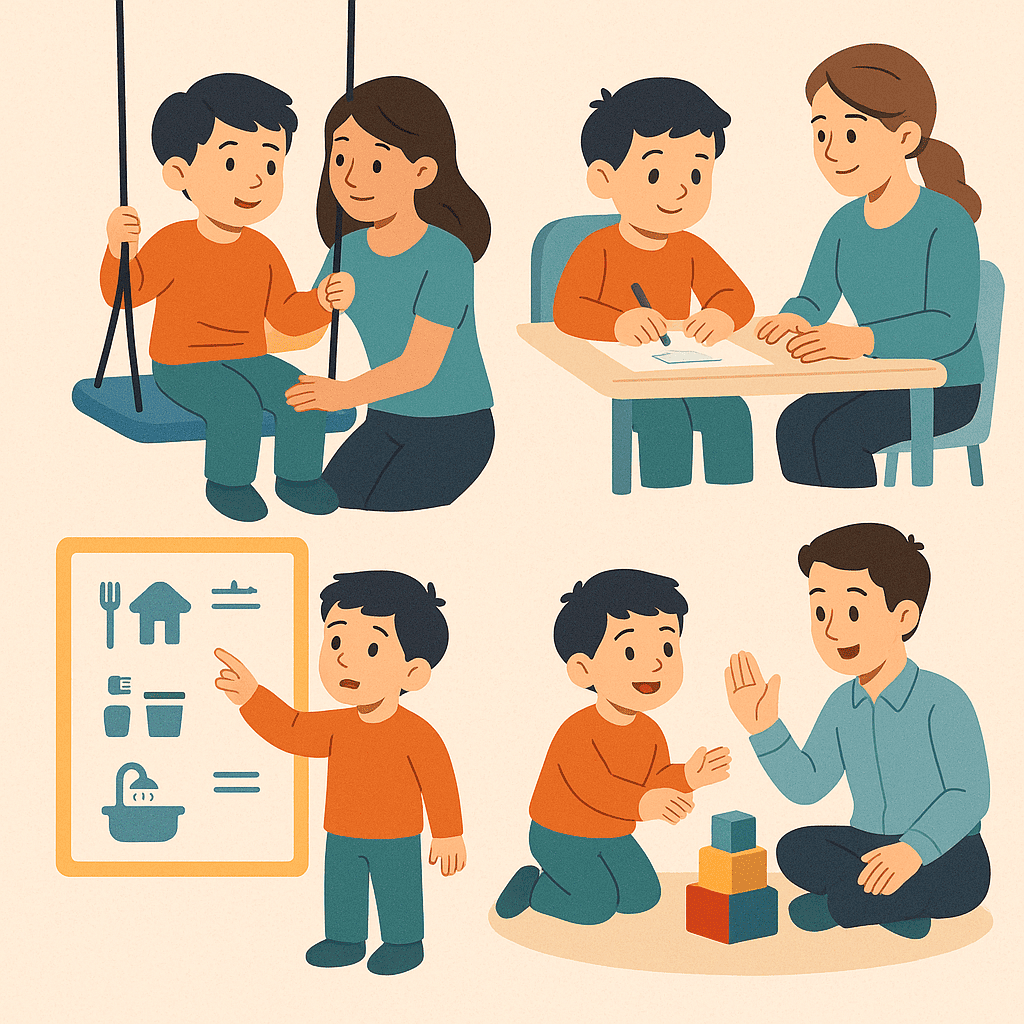The Role of Occupational Therapy in Autism: Helping Children Thrive in Daily Life
 Autism Spectrum Disorder (ASD) is a neurodevelopmental condition that affects how a child perceives the world and interacts with others. While every child with autism has a unique set of strengths and challenges, one area where many families seek support is in daily functioning — things like getting dressed, eating meals, playing with peers, or focusing in school.
Autism Spectrum Disorder (ASD) is a neurodevelopmental condition that affects how a child perceives the world and interacts with others. While every child with autism has a unique set of strengths and challenges, one area where many families seek support is in daily functioning — things like getting dressed, eating meals, playing with peers, or focusing in school.
This is where Occupational Therapy (OT) plays a vital role.
What is Occupational Therapy in Autism?
Occupational Therapy helps children with autism build the skills they need for everyday living. Rather than focusing only on “therapy inside a clinic,” OT is about enabling participation in the child’s most important activities — or “occupations” — such as self-care, play, and learning.
Key Areas Where OT Helps
1. Sensory Processing and Regulation
Children with autism often have sensory differences. Some may be highly sensitive to noise, light, or touch, while others may seek out strong movement or pressure. OTs use sensory integration techniques to help children regulate these responses, so they can stay calm, focused, and ready to learn.
2. Daily Living Skills
Simple tasks like brushing teeth, buttoning a shirt, or using the toilet can be overwhelming for some children. OT breaks these tasks down step by step, using visual aids, structured routines, and patient practice to build independence.
3. Fine and Gross Motor Development
OT works on improving motor skills — from handwriting and using scissors to running, climbing, and playing on swings. This not only helps with academics but also gives children confidence in sports and play.
4. School Readiness and Learning
Sitting still, paying attention, and transitioning between activities are often tough for children with autism. OTs collaborate with teachers to create classroom supports such as flexible seating, sensory breaks, and visual schedules, making school a more positive experience.
5. Social Participation
Play is a child’s natural language. OTs help children learn turn-taking, sharing, and pretend play, which are essential foundations for building friendships.
6. Emotional and Behavioral Support
By teaching coping strategies and adapting the environment, OT helps children manage meltdowns, anxiety, and frustration better. This also supports parents, teachers, and caregivers in maintaining consistency.
Why OT Matters in Autism
Occupational Therapy is not about “changing who the child is.” Instead, it’s about helping them engage fully in the world around them — to eat without distress, to enjoy play, to participate in school, and to move toward independent living. For families, this translates into less stress at home and more opportunities for their child to shine.
Final Thoughts
Raising a child with autism can feel like a journey with many unknowns. Having the right support system — which often includes occupational therapy — can make a significant difference. Early, structured, and individualized OT intervention helps children unlock their potential and live with greater independence and joy.
✍️ About the Author
I’m Dr. Srinivas Rajkumar T, Consultant Psychiatrist (MD AIIMS, DNB Psychiatry), with experience in child, adult, geriatric, and addiction psychiatry. At my clinics in Chennai, I work closely with families, occupational therapists, and other specialists to provide comprehensive, compassionate care for children with autism.
📍 Locations: Apollo Clinic Velachery & Apollo Clinic Tambaram
📞 Contact: 8595155808
🌐 Visit my website: srinivasaiims.com